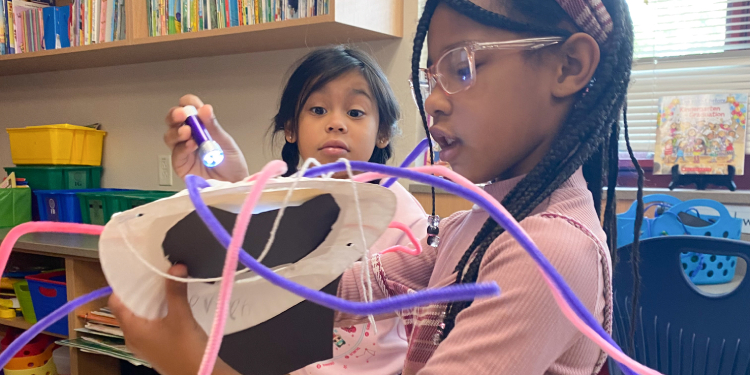Empower Kids to Confront Environmental Issues

Originally published April 2024
As part of its yearlong Earthshot spotlight dedicated to climate solutions and sustainability, the Museum of Science has developed a suite of interactive curricula and educational games to inspire the next generation of scientists, engineers, and passionate problem solvers. Available in English and Spanish, the new Earthshot educational resources span grades preK-12 and formats, including Youth Engineering Solutions (YES), Engineering is Elementary (EiE), Kahoot!, and TinyTap, encouraging students of all ages to imagine and design innovative technologies to help solve pressing environmental problems.
Launched early this year, Youth Engineering Solutions (YES) brings the expertise and creativity of the Museum of Science into classrooms. YES lessons are equity-oriented and socially engaged, connecting engineering challenges to relevant real-world problems in students’ lives and communities and inviting them to consider the impacts of engineered designs on different individuals, groups, and systems. In 2024, the Museum is offering 21 units on environmental issues ranging from green energy and energy conservation to sustainable cooking, recycling, and bioplastics.
“The preK-12 education division at the Museum of Science is integral to our mission to make public science learning accessible to everyone,” said Christine Cunningham, senior vice president of STEM Learning. “Those who cannot currently visit the Museum in person will find its high-quality educational materials online and in classrooms. As part of our yearlong Earthshot spotlight, our new YES curricula engage youth in grades K-8 in activities focused on green engineering, sustainability, and climate solutions, empowering them to make sound environmental choices.”
YES and EiE lessons invite students to build solar ovens, create windmill blades, insulate model homes, redesign model cities to minimize storm water runoff, improve processes for cleaning up model oil spills, engineer trash collectors, program environmental computer games, and design water filters, tabletop maglev transportation systems, and vertical farms. Free of charge, YES units are designed for classroom, out-of-school, and at-home settings, drawing on more than three decades of research and development by the Museum’s education division.
Each unit’s activities introduce green engineering through storybooks, covering science concepts, product life cycles, and environmental impacts. YES invites students to imagine, plan, create, test, and improve their solutions, engaging them in the systematic, iterative process of engineering design. Complementary to YES, the Museum’s eight Earthshot Kahoot! learning games—four in English, and four in Spanish—explore topics such as waste and recycling, mass transit, sustainable farming, and the green future of work and jobs. Created for grades 9-12 with a career readiness focus, Earthshot kahoots have been refined through input from the Museum’s Fenway High School student advisors. For younger learners in preschool, the Museum is releasing two TinyTap games on climate, with a focus on pollution and microplastics through storytelling and activities.
“The Museum brings public science learning to over 100M people every year through our digital content,” said Alexis Rapo, chief digital officer. “With our Kahoot! and TinyTap learning games, we are engaging and enabling budding scientists everywhere, fueling their interests, skills, and knowledge to pursue careers in STEM.”
Aligned with the Year of the Earthshot onsite, the Museum of Science’s new curricula and digital learning games teach us how we can and will live sustainably on Earth, exploring the innovations that are transforming the ways we live, move, eat, and work.
